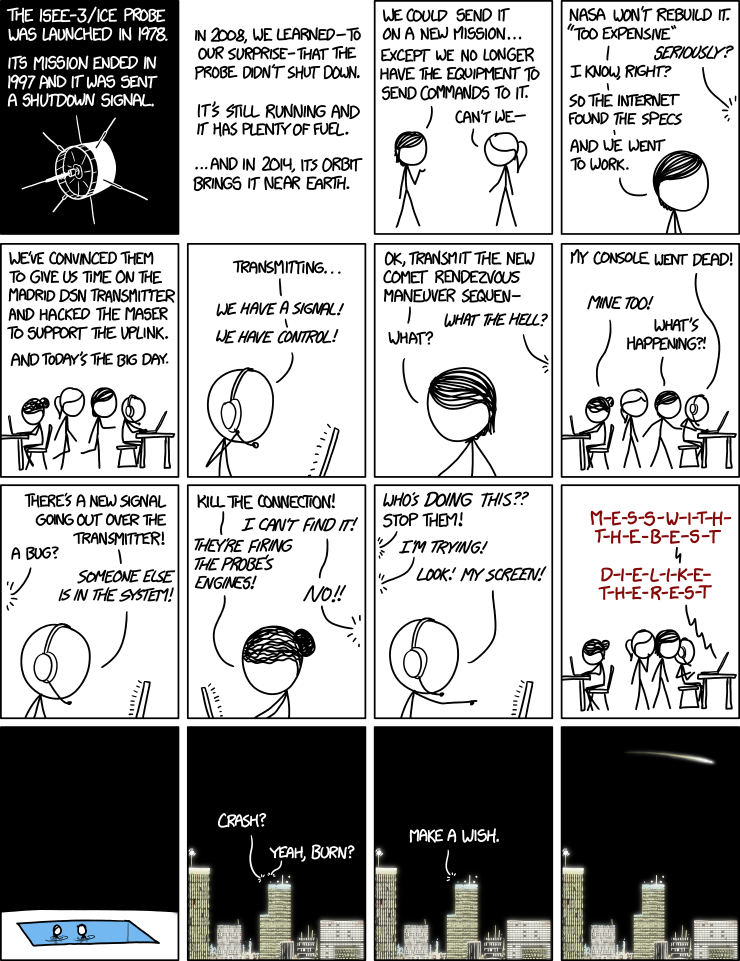When it comes to using Platonic solids as dice, the d4 is something of a special case. There are precedents that stretch back into ancient history for the use of the d6, d8, d12 and d20 as dice, as all four of those solids, when rolled, will land with a single face up, visible to all parties watching. A tetrahedron, however, lands with a vertex up, one face down and three faces on display. As the example of the Zazz Polyspheres shows (their d4 is on the left above), simply putting a number on each of the four faces of a tetrahedron does not immediately turn it into what we know as a d4. For a tetrahedron to generate a random number between 1 and 4 that will be visible to people observing the die from all angles, some innovation was required.
The use of tetrahedrons as dice in games goes back to the Royal Game of Ur -- though scholars believe its tetrahedron yielded only binary results, by marking only two of its four vertexes and determining if a marked vertex is pointing up when the tetrahedron lands. More commonly in history, implements of chance with four possible results would be crafted not as tetrahedrons, but instead with four-sided staves or teetotums, of which the dreidel is the most familiar example. Turning a tetrahedron into a d4 required inspiration, and there are a few places we can look for it in the 1960s.
Educational textbooks in the 1960s gave instructions to students for constructing all of the regular polyhedra out of paper, including the tetrahedron. They rendered these two-dimensionally as ladders that could be cut out, folded, and then taped or glued into shape. A good example would be Mangus Wenninger's 1966 Polyhedron Models for the Classroom:
Wenninger proposed coloring in the faces to differentiate them, but offered no numbering scheme. A number of companies had similar offerings in the 1960s: Creative Publications offered a book of punch-out, brightly colored polyhedra, per this 1968 advertisement:
... but to turn them into a viable means of generating numbers 1 to 4 required something new: a way of assigning numbers to either edges or vertexes. Effectively, that meant taking the four triangles that make up the tetrahedron and labeling each of them with three specific numbers between 1 and 4. If we look at the problem in Wenninger's two dimensions, as triangles that we are aligning together, then there were potential precedents to draw on from the games of the 1960s.
A tradition of triangular dominos games goes back to the nineteenth century. Much like regular dominos, players lay pieces that must match an edge of a previously played piece. Broadly, we can divide numbered triangular domino game pieces into two categories: those that assign a number to a corner, and those that assign a number to an edge. An early game like Contack (1939) shows a way of assigning a number to each of the three edges of a triangular domino. By the 1960s, you could for example play the Game of Triangles (1964).
So could we take the triangular pieces from the Game of Triangles with the numbers 1 through 4 and assemble them, with a bit of glue or tape, into a viable Creative Publications style d4? Not quite...
... since the order of the numbers would have to be amended: the 1-2-4 and 2-3-4 triangles are identical to the faces of a Creative Publications d4, but we'd need to swap the 3 and 4 on the 1-3-4 triangle, and the 2 and 3 on the 1-2-3 triangle. That much said, there were a lot of these triangular domino games in circulation, and perhaps there's one that fits better. Ultimately, the precedent of labelling triangles for these games shows us a potential path toward the d4 as we've come to know it -- which is not meant to downplay the insight needed to realize that.
After D&D became popular, and many manufacturers made d4s for role-playing games, the layout of numbers on tetrahedrons began to shift from what we call "bottom-read" d4s to "top-read" d4s. D&D itself seems to have made the change in the early 1990s from tetrahedrons whose numbers are assigned to edges, to ones where numbers are assigned to vertexes. These triangles follow the layout of another popular triangular domino game of the 1960s, Tri-ominos.
But was it all worth the effort? Tetrahedrons do not roll well as dice, so much so that the Moldvay Basic Set in 1981 had to give instructions on its use: "The best way to 'throw' or roll a 4-sided die is to spin it and toss it straight up," whereas "the other dice are rolled normally and the top face gives the result." They aren't very easy to pick up, either, and every gamer who has stepped on one curses the day that they were ever invented. This inspired a number of people to try to build a better d4 from Platonic solids other than tetrahedrons. Lou Zocchi, for example, produced his own octahedral d4 in 1984, which he would brand the "four-most."
Zocchi truncated the vertices of these dice to differentiate them from the d8s he sold - it looks like two pyramids glued together. And today, Koplow sells a pipped dodecahedral d4 that rolls quite smoothly, and there is no shortage of dreidels. But nonetheless, the d4 endures: something about having all five Platonic solids at hand seems to have become integral to the identity of role-playing games. But the d4, in light of the innovation required to create it, will always be something of an oddity.














